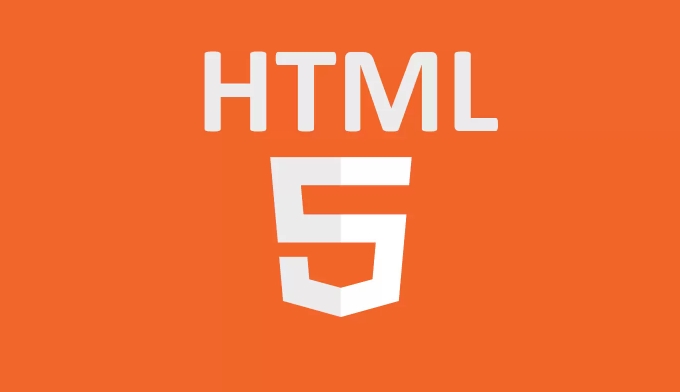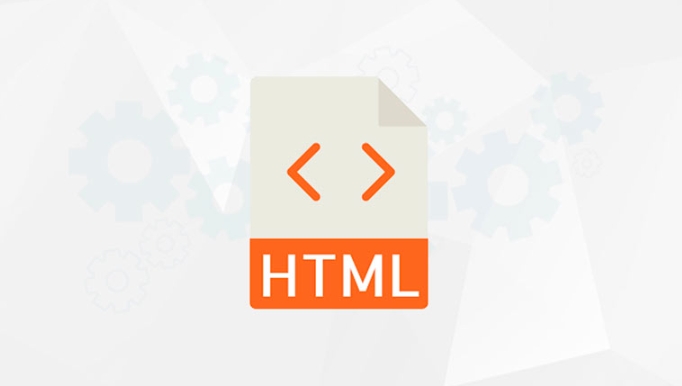<keygen> is a deprecated tag in HTML that is used to generate key pairs in forms for secure verification. 1. The function of <keygen> is to allow the browser to generate public and private keys, which are often used for client certificate generation; 2. Its common attributes include name, challenge, keytype, etc., to control the key generation behavior; 3. The reason for the deprecation is that modern browsers gradually abandon support and have a more flexible Web Crypto API to replace it; 4. For old system maintenance, it is recommended to record dependencies, gradually migrate to modern encryption solutions, and mark their deprecated status in the document.

In web development, some HTML elements are outdated, understanding their purpose and background can still help understand the logic of some old systems. The <keygen></keygen> tag is one of them.

It was originally used to generate key pairs in forms, and is often used for secure verification processes when users register, such as the generation of client certificates. Although it has been deprecated now (and modern browsers are gradually no longer supported), it is worth knowing when maintaining old systems or learning historical security mechanisms.
1. What is <keygen></keygen> ?
The purpose of the <keygen></keygen> tag is to allow the browser to generate a public and private key pair, which is usually used in conjunction with the server side for authentication. It has been widely used in scenarios where client certificates are required, such as internal enterprise login, SSL client authentication, etc.

This element appears in the form, and when the user submits the form, the browser sends the public key to the server, and the private key is saved on the user's local device.
For example:

<form method="post" action="/register"> <input type="text" name="username"> <keygen name="pubkey"> <input type="submit" value="Register"> </form>
In this example, when a user submits a form, in addition to the user name, the generated public key information will also be brought with him.
2. Common properties and uses
Although <keygen> is used relatively simple, it supports several key properties to control key generation behavior:
-
name: Must be set to identify the data received by this field on the server side. -
challenge: A string that will be included in the certificate request for server verification. -
keytype: Specifies the generated key type, common values includersa,dsa,ec, etc. -
autofocusanddisabled: Standard Boolean properties, control focus and disabled state.
For example:
<keygen name="user_key" challenge="abc123" keytype="rsa">
In this way, the browser will include "abc123" into the certificate request when generating the key, so that the server can perform subsequent processing.
3. Why is it not recommended to use now?
With the development of web technology, more modern and flexible security mechanisms have gradually replaced the functions of <keygen></keygen> :
- The Web Crypto API provides more powerful and controllable encryption capabilities, and developers can operate key generation, signature and encryption directly in JavaScript.
- Browser manufacturers are gradually abandoning support for
<keygen></keygen>, Chrome has removed the tag in earlier versions, and Firefox is also reducing support for related features. - User experience issues: Many users are not familiar with key management and certificate operations, which can easily cause confusion.
If you are building a new project, it is recommended to use JavaScript encryption schemes or to generate tokens on the server, such as JWT or OAuth processes.
4. What if the old system is still being maintained?
If you take over an old project and use <keygen></keygen> in it, you don't have to worry too much. It will still work properly for a while as long as the browser has not fully cleared the support.
However, it is recommended that you:
- Record the dependencies of existing functions to avoid compatibility issues caused by blind upgrades.
- Consider gradually moving to modern encryption solutions, such as replacing the original logic through the Web Crypto API.
- Mark the use of
<keygen></keygen>in the document and indicate its deprecated status to facilitate identification by subsequent maintenance personnel.
Basically that's it. Although <keygen></keygen> is no longer commonly used, as part of history, understanding its role and limitations is also helpful for understanding the evolution of front-end security mechanisms.
The above is the detailed content of HTML `keygen` Element (Deprecated but good to know). For more information, please follow other related articles on the PHP Chinese website!

Hot AI Tools

Undress AI Tool
Undress images for free

Undresser.AI Undress
AI-powered app for creating realistic nude photos

AI Clothes Remover
Online AI tool for removing clothes from photos.

Clothoff.io
AI clothes remover

Video Face Swap
Swap faces in any video effortlessly with our completely free AI face swap tool!

Hot Article

Hot Tools

Notepad++7.3.1
Easy-to-use and free code editor

SublimeText3 Chinese version
Chinese version, very easy to use

Zend Studio 13.0.1
Powerful PHP integrated development environment

Dreamweaver CS6
Visual web development tools

SublimeText3 Mac version
God-level code editing software (SublimeText3)

Hot Topics
 Applying Semantic Structure with article, section, and aside in HTML
Jul 05, 2025 am 02:03 AM
Applying Semantic Structure with article, section, and aside in HTML
Jul 05, 2025 am 02:03 AM
The rational use of semantic tags in HTML can improve page structure clarity, accessibility and SEO effects. 1. Used for independent content blocks, such as blog posts or comments, it must be self-contained; 2. Used for classification related content, usually including titles, and is suitable for different modules of the page; 3. Used for auxiliary information related to the main content but not core, such as sidebar recommendations or author profiles. In actual development, labels should be combined and other, avoid excessive nesting, keep the structure simple, and verify the rationality of the structure through developer tools.
 What are the essential HTML elements for structuring a webpage?
Jul 03, 2025 am 02:34 AM
What are the essential HTML elements for structuring a webpage?
Jul 03, 2025 am 02:34 AM
The web page structure needs to be supported by core HTML elements. 1. The overall structure of the page is composed of , , which is the root element, which stores meta information and displays the content; 2. The content organization relies on title (-), paragraph () and block tags (such as ,) to improve organizational structure and SEO; 3. Navigation is implemented through and implemented, commonly used organizations are linked and supplemented with aria-current attribute to enhance accessibility; 4. Form interaction involves , , and , to ensure the complete user input and submission functions. Proper use of these elements can improve page clarity, maintenance and search engine optimization.
 Implementing client-side form validation using HTML attributes.
Jul 03, 2025 am 02:31 AM
Implementing client-side form validation using HTML attributes.
Jul 03, 2025 am 02:31 AM
Client-sideformvalidationcanbedonewithoutJavaScriptbyusingHTMLattributes.1)Userequiredtoenforcemandatoryfields.2)ValidateemailsandURLswithtypeattributeslikeemailorurl,orusepatternwithregexforcustomformats.3)Limitvaluesusingmin,max,minlength,andmaxlen
 How to group options within a select dropdown using html?
Jul 04, 2025 am 03:16 AM
How to group options within a select dropdown using html?
Jul 04, 2025 am 03:16 AM
Use tags in HTML to group options in the drop-down menu. The specific method is to wrap a group of elements and define the group name through the label attribute, such as: 1. Contains options such as apples, bananas, oranges, etc.; 2. Contains options such as carrots, broccoli, etc.; 3. Each is an independent group, and the options within the group are automatically indented. Notes include: ① No nesting is supported; ② The entire group can be disabled through the disabled attribute; ③ The style is restricted and needs to be beautified in combination with CSS or third-party libraries; plug-ins such as Select2 can be used to enhance functions.
 Implementing Clickable Buttons Using the HTML button Element
Jul 07, 2025 am 02:31 AM
Implementing Clickable Buttons Using the HTML button Element
Jul 07, 2025 am 02:31 AM
To use HTML button elements to achieve clickable buttons, you must first master its basic usage and common precautions. 1. Create buttons with tags and define behaviors through type attributes (such as button, submit, reset), which is submitted by default; 2. Add interactive functions through JavaScript, which can be written inline or bind event listeners through ID to improve maintenance; 3. Use CSS to customize styles, including background color, border, rounded corners and hover/active status effects to enhance user experience; 4. Pay attention to common problems: make sure that the disabled attribute is not enabled, JS events are correctly bound, layout occlusion, and use the help of developer tools to troubleshoot exceptions. Master this
 Configuring Document Metadata Within the HTML head Element
Jul 09, 2025 am 02:30 AM
Configuring Document Metadata Within the HTML head Element
Jul 09, 2025 am 02:30 AM
Metadata in HTMLhead is crucial for SEO, social sharing, and browser behavior. 1. Set the page title and description, use and keep it concise and unique; 2. Add OpenGraph and Twitter card information to optimize social sharing effects, pay attention to the image size and use debugging tools to test; 3. Define the character set and viewport settings to ensure multi-language support is adapted to the mobile terminal; 4. Optional tags such as author copyright, robots control and canonical prevent duplicate content should also be configured reasonably.
 Debugging common HTML validation errors.
Jul 03, 2025 am 02:41 AM
Debugging common HTML validation errors.
Jul 03, 2025 am 02:41 AM
When encountering HTML verification errors, you must first clarify the problem and correct it according to the specifications. 1. When the required attributes are missing, the src and alt and a href of img should be completed; 2. When the tag nesting is incorrect, the structure should be clarified and the tags should be closed correctly to avoid confusion in nesting block-level elements; 3. When using invalid or discarded tags, you should refer to the MDN document to replace it with modern writing methods, such as replacing center and font with CSS; 4. When character encoding problems, add metacharset="UTF-8" and ensure that the file is saved in UTF-8 format to solve it.
 How to associate captions with images or media using the html figure and figcaption elements?
Jul 07, 2025 am 02:30 AM
How to associate captions with images or media using the html figure and figcaption elements?
Jul 07, 2025 am 02:30 AM
Using HTML sums allows for intuitive and semantic clarity to add caption text to images or media. 1. Used to wrap independent media content, such as pictures, videos or code blocks; 2. It is placed as its explanatory text, and can be located above or below the media; 3. They not only improve the clarity of the page structure, but also enhance accessibility and SEO effect; 4. When using it, you should pay attention to avoid abuse, and apply to content that needs to be emphasized and accompanied by description, rather than ordinary decorative pictures; 5. The alt attribute that cannot be ignored, which is different from figcaption; 6. The figcaption is flexible and can be placed at the top or bottom of the figure as needed. Using these two tags correctly helps to build semantic and easy to understand web content.






